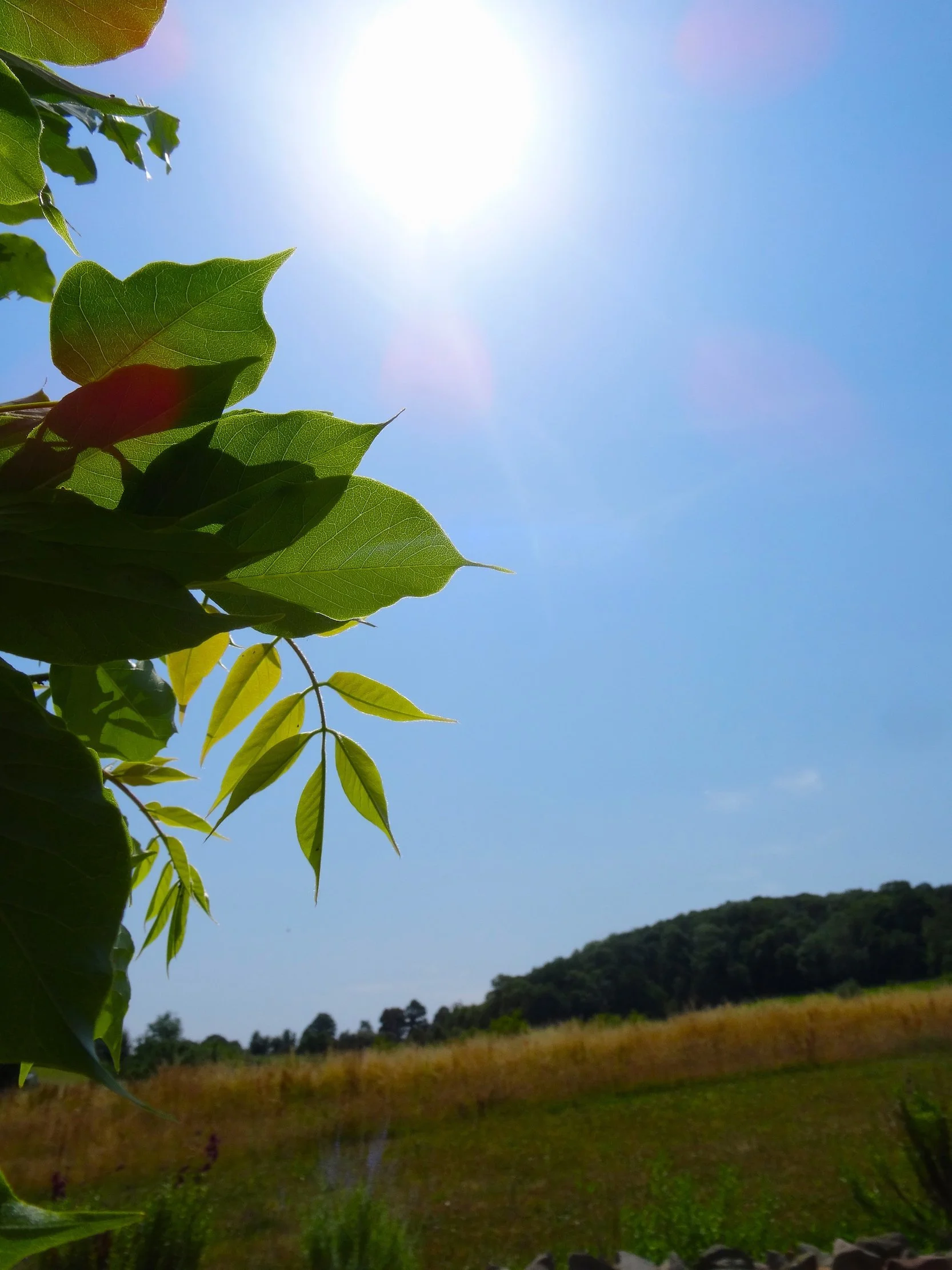Staying cool indoors in the July 2022 heatwave
Better insulation, draught-proofing and more energy-efficient windows can all help to reduce overheating in homes. Here, we describe what happened to the indoor temperature of our oak-frame Passivhaus during the UK’s July heatwave. We hope our experience offers some pointers for existing properties, as well as for new ones, as summer temperatures rise considerably, as happened with the UK’s record-breaking heatwave on 18-19 July 2022; it is increasing likely that we will experience extremely warm days and temperatures above 40°C in the future.
According to the Met Office, Tuesday 19 July 2022 was a ‘historic day’ for temperatures; in England & Wales: the highest was 40.3°C and the lowest 25.8°C. Locally, our highest outdoor temperature (measured in the shade) was 34.18°C that day, and the lowest was 25.5°C.
The first image below shows the indoor and outdoor temperatures at Woodlands for the two days before the heatwave and the two days of it. The key point is that whilst the indoor temperature progressively increased over these four days it did so only slightly and slowly, to a maximum of 25.5°C at 1.26am on 20 July. Importantly, the house remained comfortable throughout. (Our nearest neighbour tell us that their indoor temperature reached 32-33°C.)
The relative long-term constancy of temperatures in our passive house is also demonstrated in the second image below which shows the indoor and outdoor temperatures over the preceding four months: indoor temperatures consistently stayed in the mid 20-25°C rage. (These temperatures were measured by data loggers every 30 minutes, with the outdoor temperature being measured in the shade on a north-facing wall and the indoor temperature in the master bedroom. You can see more temperature data in our blog about passive house living.)
Indoor and outdoor temperatures (degC) at Woodlands 27 March - 20 July 2022
Indoor and outdoor temperatures (degC) at Woodlands 16-19 July 2022
Whilst first thoughts on passive houses often concern reduced heating costs, their main feature is consistent, high levels of indoor comfort, including keeping cool in summer, which will become increasingly relevant to us all.
There are some Passivhaus principles that are applicable to many existing buildings and, certainly, all of them to new ones. The five key features of passive houses:
high levels of thermal insulation;
minimised thermal bridging of this insulating layer;
stringent airtightness;
mechanical ventilation with heat recovery; and
high-quality (usually triple-glazed) windows
each contribute to maintaining a gentle, even indoor temperature throughout the year varying only a little with extremes of outdoor temperatures.
We’ve previously described what it’s like to live in our passive house but at that time we had not experienced the high temperatures of mid-July 2022. During July’s heatwave, we kept the indoor temperature down by:
using the external horizontal blinds over the two balconies (which themselves provide shading to the two downstairs bedrooms) and the two south-facing roof windows (these are shown in the photograph below);
keeping all indoor window blinds closed during the day;
keeping all windows closed;
opening two downstairs windows and all roof windows overnight to expel heat; (‘Mediterranean purging’);
increasing the mechanical ventilation system to full; and
employing the ‘cooler battery’ when the indoor temperature reached 22°C (21°C on the hottest two days) to reduce the temperature of the incoming air by some 5-7°C. (Here, a cooler battery is a heat exchanger placed in-line with the air intake duct of the mechanical ventilation unit. Cold fluid is passed through this heat exchanger which extracts heat from the air coming into the house and transfers it to the ground for future use, such as heating domestic hot water. Recommended by our heat pump installer, this is not a standard feature of passive houses.)
At no time did we need to use a fan, and we slept comfortably under our all-year-round lightweight duvet as normal.
Drone photograph of the south-facing facade of our house showing how the balcony horizontal blinds stop the sun entering the upstairs windows. The balconies also shade the downstairs rooms. The two central roof windows (over the hall) also have blinds.
We have a climate emergency which requires a plethora of actions to address it; one of these concerns making housing more energy efficient, which is a particular issue in the UK.
Of course, it isn’t possible to convert all buildings to the Passivhaus standard, but we hope our recent experience shows that effective insulation, draught proofing and energy efficient windows keep heat out as well as in, and that these, plus shading strategies (such as closing curtains and/or fitting window shutters), and Mediterranean purging can help other properties to keep cool too.
And if you are thinking of self-building then consider designing and building to the Passivhaus standard. You can experience the Passivhaus difference at Woodlands B&B, winner of the Build It Best Eco Home 2021 award. Come and stay!



